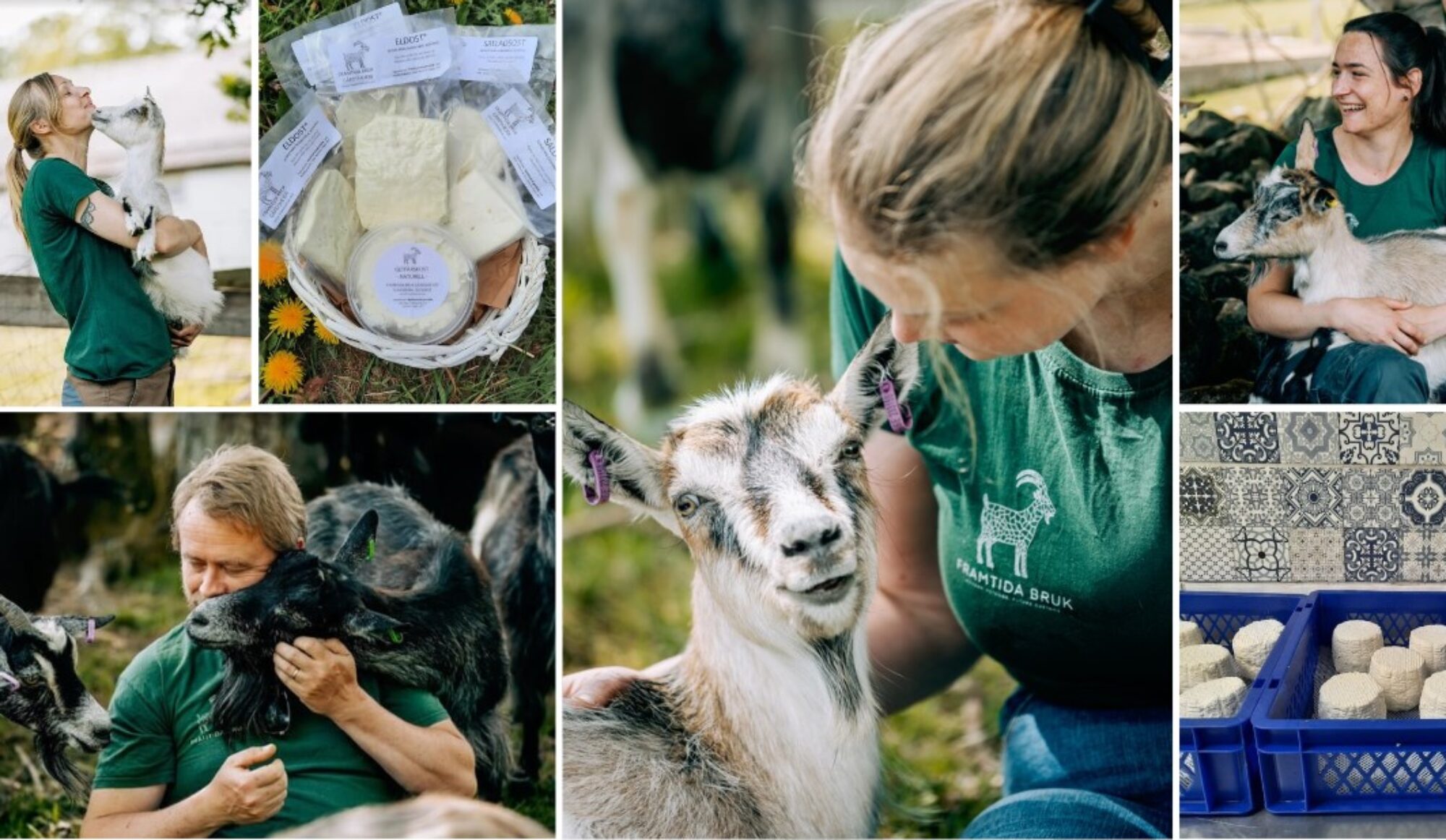Utöver vår webshop hittar ni våra ostar och getfällar hos olika gårdsbutiker. Här har vi listat några som är fina utflyktsmål att besöka!
Våra ostar levererar vi bland annat till Smaklöken i Jämjö, Farmors Gårdsbod i Grimslöv , Äggaboden i Gärestad och Kvarnens Gårdsbod i Åryd utanför Växjö. Det finns alltid risk för att ostarna är slutsålda/uppätna så kontakta gärna butiken innan ni åker dit för att säkerställa att det du är sugen på finns i lager.
Våra fina getfällar hittar ni också på Äggaboden, hos Lina på Atelje Stensjömåla utanför Ryd och på Börjessongården i Sandbäck, Sölvesborg.


Smaklöken är en charmig lanthandel i Jämjö utanför Karlskrona som drivs av lokala bönder. Här hittar ni riktig mat av hög kvalitet! Det finns närproducerat kött och grönsaker från deras egna gårdar men även från andra lokala producenter. I delidisken hittar du flera hantverksostar och egengjorda charkuterier. Smaklöken hittar du här: jamjolanthandel.se


Äggaboden i Gärestad utanför Ronneby är ett måste för matälskare. Gårdsbutiken är fylld av mathantverk och de har också en restaurang som serverar finfin mat och fika med en vacker vy. Äggabodens info hittar ni här: aggaboden.se


Hos Farmors Gårdsbod i Grimslöv hittar ni handgjorda chokladpraliner, mjuksega kolor, krämig fudge, hemgjord glass och egenodlade bär. Här finns också mathantverk från fler lokala producenter. På sommaren står Glassbaren utanför och det är blomstersjälvplock på Barnens Trädgård som ligger alldeles intill! Här hittar ni mer info: barnenstradgard.com


Kvarnens Gårdsbod i Åryd utanför Växjö andas lantlig idyll! Glada höns springer omkring, det finns söta får att titta på och en stor lekpark där man kan fika på godsakerna från gårdsbutiken. Här hittar du småskaliga mathantverk och grönsaker odlade utan bekämpningsmedel i deras egna småskaliga odling. kvarnensgardsbod.se


Stensjömåla gård ligger strax utanför Ryd och är en nyöppnad konstatelje med bland annat betonghantverk. Lina har redan hunnit med att anordna några riktigt trevliga evenemang där ni kanske stött på oss, som julmarknaden då många olika lokala hantverksproducenter samlades. Något att hålla utkik på under året då det troligtvis blir fler events! Öppettider och mer info hittar ni här: stensjomalagard.se


Börjessongården drivs av Bettan & Hasse i natursköna Sandbäck i Sölvesborg. Här kan du kan boka ett besök i deras utställningslokal där du hittar hantverk som skulpturer, tavlor och mer. Emellanåt öppnar de även ett pop up café. Håll utkik på deras instagram @bettan_i_sandback eller gå till hemsidan borjessongarden.se






































